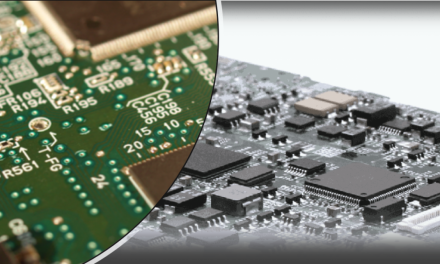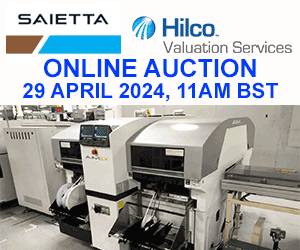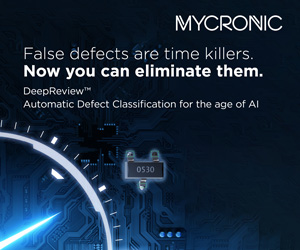The Death of the Electronics Industry

By Michael Ford, Aegis Software
Oh dear. It was all going so well. The growth of electronic devices and embedded systems into pretty much everything that we use and have come to depend on, has fueled the increase in the volume of electronics manufacturing steadily for many years. Electronics is everywhere, though this seems to escape the attention of many analyst reports. The integration of electronics into the discrete manufacturing world, is leading to the downfall of the stand-alone electronics industry, working in isolation from business-driven market verticals, due to its specialization. Business pressures are pushing electronics to evolve and become an integral part of discrete manufacturing, bringing a whole new set of challenges.
The electronics industry has in fact been in denial on this issue for quite some time. Almost every electronics manufacturing operation already exists as a combination of two distinct areas, the PCB assembly which features specialist machines and technologies, and the main product assembly, often called “box-build”, with a fuzzy line dividing the two. On the one side, the myriad of highly automated and specialized machines that place components on PCBs, and inspect them etc. represents an extremely complex domain, that is not addressed at a more than superficial level by the vast majority of generic MES systems out there. The converse issue, is that specialist solutions for electronics, are notorious for providing very poor support for discrete assembly tasks beyond the SMT area. As such, the factory has been, in effect, divided.
This division routinely causes many issues. On the engineering side, product detail has to be split between the various different processes and machines, automated and manual PCB assembly, as well as the box-build for the main product, creating multiple “flattened” Bill of Materials instances, generating lead-time, duplicate engineering effort and the opportunity for mistakes. Planning is also very difficult, with automated lines often running with a different production shift pattern as compared to main assembly, mandating complex intermediate assembly stock, restricting flexibility. With data coming from a variety of differing sources throughout the entire production cycle, each with different procedures, definitions and format, it is almost impossible to put together traceability data acquisition such that conformance can be assured without the need for significant manual effort.
Going forward into the fully integrated assembly manufacturing scenario, there are several other challenges. On the high-volume piece-part manufacturing side, for example injection molding, machining etc., the quality and sampling processes are quite specialized and entirely different than PCB and further assembly. On the high-level system build side, processes are longer and often operations come to the product instead of product moving through operations. Further, discrete MES requires integration to the solid-model from the PLM system whereas PCB requires integration to the ECAD. Piece-part and discrete assembly vs. PCB require vastly different MES capabilities, which is why traditionally the pursuit of a singular platform to handle both elegantly has been elusive. All the individual requirements from these once isolated processes, now need to be fully supported within one holistic process.
True Manufacturing Flexibility Without Loss of Productivity
Having lived with increasing pain for so many years, the final straw for assembly manufacturing is that with the reduction in the distribution-chain, that exists from the point where manufacturing is completed, to the point of delivery to the customer, has got to the point where fluctuations in customer demand are being felt directly by factories. Common practices today that make the factory appear more flexible, through the creation of excessive intermediate or finished goods stock, are now recognized as being too expensive, carrying too much risk, as they really have served to move the issues related to stock holding from one place to another, under a different fiscal responsibility. True flexibility in manufacturing is now needed, holistically, without the loss of productivity.
Legacy Architecture, Functions and Databases Won’t Cut It
The specialization of Electronics assembly and the whole of discrete manufacturing now must exist under one close-knit control mechanism. Industry 4.0 is the realization of the solution, the ability to orchestrate manufacturing in high-mix, highly volatile environments holistically, to meet changing customer needs. For Industry 4.0 software to work effectively, it needs visibility and control of the entire end-to-end manufacturing operation, in real-time. It needs a singular MES platform that elegantly supports piece part manufacture, PCB manufacture, box build, and up to major system integration. Legacy MES solutions that have evolved through the crude linkage of behind the scenes legacy architecture, functions and databases, are very severely challenged to meet new-generation manufacturing needs, in the same way as an old-fashioned, high-volume production line is challenged to meet the needs of high-mix production.
Very few solution vendors are prepared to admit that this has been happening, and many today are scrambling to fine-tune their solution infrastructures, trying to integrate pieces of code from disparate systems that were once specific task-orientated applications. The death of the electronics industry as an isolation from the mainstream business verticals, spells the end also for legacy MES systems that ultimately cannot adapt to the holistic need of modern Industry 4.0 that is inclusive of specialist operations such as electronics.
The Revolution Begins Now
This really is then where the revolution truly begins. Anyone considering investment in a new or upgraded manufacturing solution, to find genuine improvement, should now throw away their existing lists of tick-boxes, and learn afresh about what is required to create a genuinely flexible, holistic, manufacturing operation, seamlessly inclusive of specialist areas, such as electronics, that provides the required tools to achieve the real intent behind Industry 4.0. Only then, will we put an end to the continuing decline of productivity levels, as the mix of products increases, following the variation and volatility in demand from the customer on an almost day by day basis. Trying to predict or simulate production beyond a short-term window is a complete waste of effort now, and a distraction from live optimization of the actual running operation that should be taking place. A new approach, that encompass the needs of flexible efficient manufacturing, that takes advantage of the latest technologies available for a modern digital MES system, with standards-driven IIoT data content such as the IPC connected Factory Exchange (CFX), is here.
It is time to re-evaluate your Smart projects, based on real business needs and trends for the coming decade, to look for the modern digital MES solution, specifically designed to provide differentiation throughout all forms of assembly requirements.














